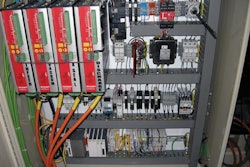This report introduced the concept of “Critical Tracking Events” to the problem of food traceability, and this idea has been gaining broad acceptance. As a result of the legislation passed by the 111th U.S. Congress relative to product tracing, members of the food supply chain—including packaging professionals—have been gearing up to improve their ability to trace food products.
The ability to trace foods in the supply chain will help to save lives, reduce food-borne illness, protect against bio-terror attacks, and reduce the magnitude and costs associated with food product recalls. Ideally, all these gains will be accompanied by improved supply chain efficiency and reduced costs to operators and consumers.
Global markets are efficient in driving production, transportation, processing, storage, sales, and consumption. Food product volumes are huge and the pace is quick. Problems are relatively rare, but when they occur, health and lives are at stake, as well as the livelihoods of industries, companies, and employees. Our ability to better trace products through the supply chain will help improve food safety and avoid devastating economic shocks to food markets.
During the last decade, development, miniaturization, and reduced costs of data collection technologies such as machine vision cameras, RFID, and laser marking, to name just a few, have helped to push our imaginations to a point where real-time traceability appears to be possible. However, what is also clear is that no one technology or top-down custom solution will solve the global food traceability problem.
One of the most powerful recent advances in food traceability is not a hardware or software technology, but rather a very simple, self-empowering idea called “Critical Tracking Event Analysis” or CTE-Analysis. CTE-Analysis is rooted in the idea that supply chain participants know their operations best. CTE-Analysis involves identification of critical tracking events (CTE). A CTE is any event that will require data collection in order to be able to track products through the event. Examples of some common CTEs are receiving, shipping, aggregation, comingling, sale, and destruction. Each CTE has specific key data elements (KDE) that will need to be collected. Ultimately, it will be up to each operator to determine which technologies, if any, are best suited for data collection and storage. Operators retain ownership and control of their CTE data, but regulators may seek permission to review data if/when required. As increasing numbers of operators make these data available to the “secure traceability cloud” we will realize opportunities to trace products from beginning to end in our global supply chain.
Critical Tracking Event Analysis is a concept that helps to reduce the complex task of global food traceability into bite-size tasks that can be solved one CTE at a time.
Bruce Welt ([email protected].) is associate professor and coordinator of the Packaging Science Program at the University of Florida; Jennifer McEntire is a senior staff scientist Institute of Food Technologists.



























